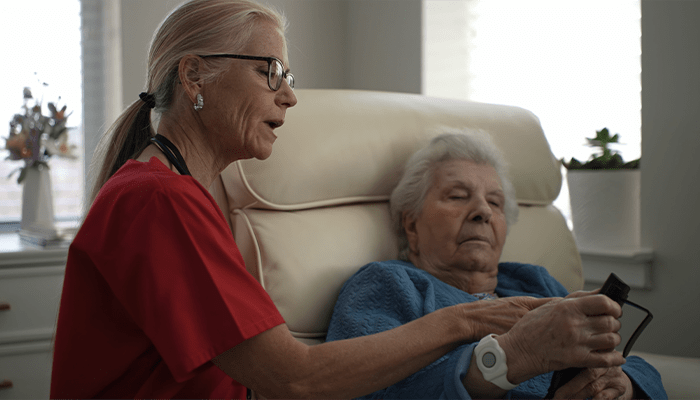
Combative Residents: Just a Part of the Job?
Growing rates of healthcare workers are experiencing physical and psychological injury as a result of workplace violence related to resident care. A staggering 95% of healthcare workers have reported exposure to aggression. However, research has found that workplace violence is underreported, signifying that actual rates may be much higher and cause for concern.
In order to decrease violent and sometimes, combative outbursts of residents that can lead to injury, healthcare workers must understand the underlying triggers that precede the aggressive behavior. There are three main types of triggers:
- Physical triggers include a physical inability to accurately describe or verbalize the needs and wants of a resident including pain, hunger, thirst, need for use of bathroom, or positioning needs. The healthcare worker may also provide the trigger through body language, touch, tone of voice, type of clothing/perfume worn, or mannerisms.
- Emotional triggers may include a resident feeling depressed, overstimulated, or experiencing sensory changes.
- Environmental triggers can include noxious stimuli from the environment surrounding the resident including noise from a television, other residents, busy nurses’ stations, or maintenance work nearby. Secondly, excessive clutter, large unfamiliar equipment, close proximity to objects or people or other changes in the resident’s regular habits and routines can all trigger violent outbursts.
Being aware of the triggers that can precede a violent outburst and knowing how to avoid these triggers can be instrumental in preventing injury to healthcare workers. Collaborating with the entire healthcare team and providing a specific resident-centered approach can decrease outbursts and keep healthcare workers, as well as the residents they care for, safe.
The AssuredPartners Senior Living team has developed a resource to help senior living communities understand the triggers and different interventions that can be utilized. For a copy of this resource, please contact our team.
Reference: Brown, B. & Kain, E. (2019). A Role for Occupational Therapy Practitioners in Mitigating Episodes of Workplace Violence in Health Care. American Occupational Therapy Association SIS Quarterly Practice Connections. 4, 31-33.
Featured News & Insights

If your senior care facility is struggling with survey performance, you may already be on CMS's radar. The Special Focus Facility (SFF) designation is more than just a label. It's a warning with real...

In early June, I traveled to Washington, D.C. with the Iowa Health Care Association (IHCA) and several skilled nursing facility (SNF) leaders to advocate for the long-term sustainability of nursing...

Watch the Webinar Replay Caring for individuals with dementia requires empathy, communication, and a deep understanding of how the brain changes over time. Our guest presenter, Molly Hedgpeth from...